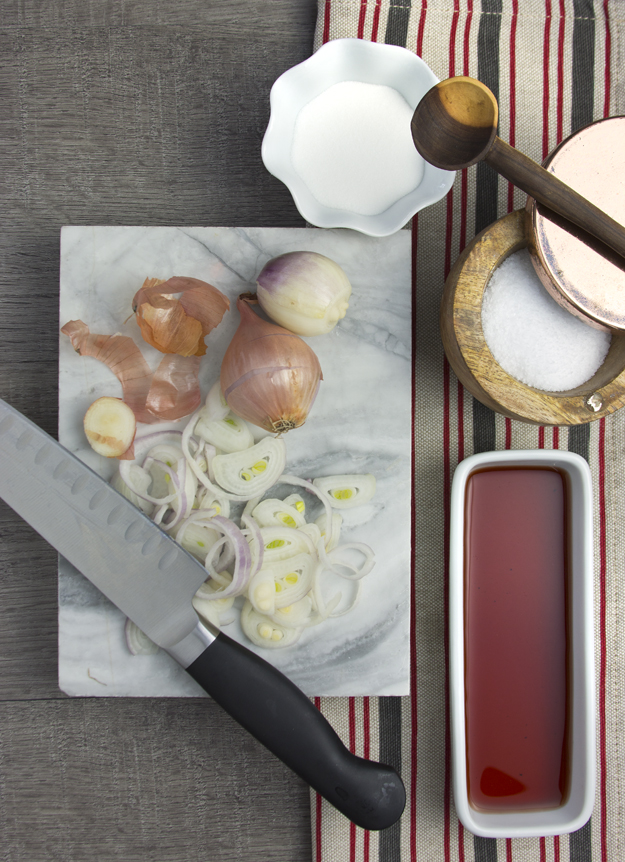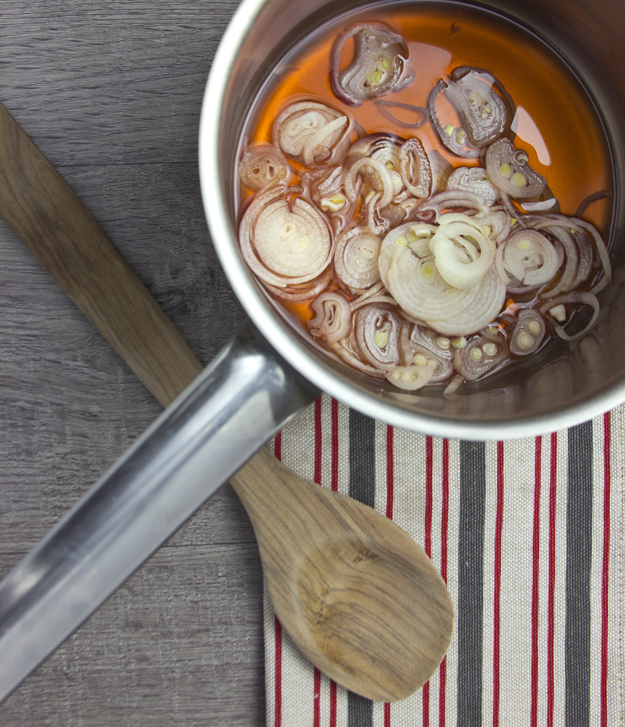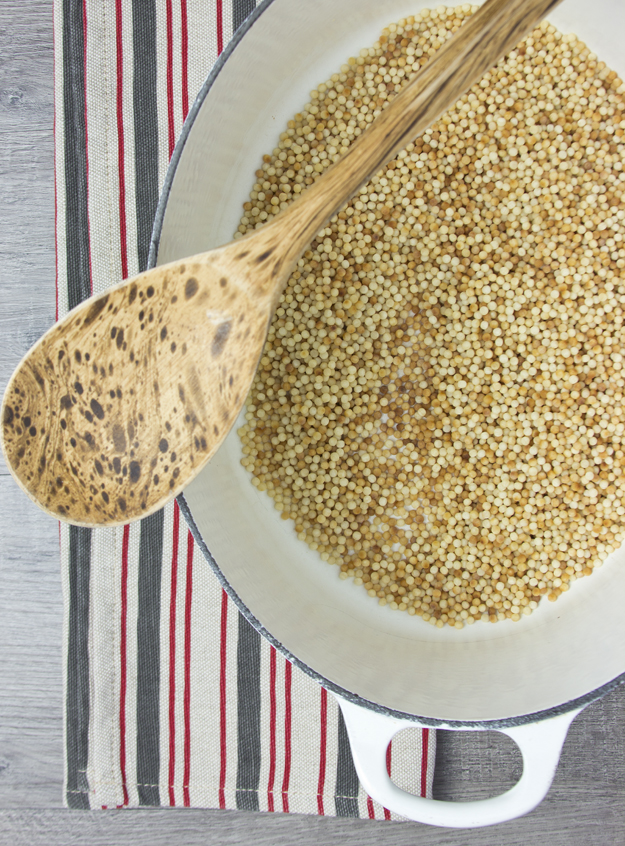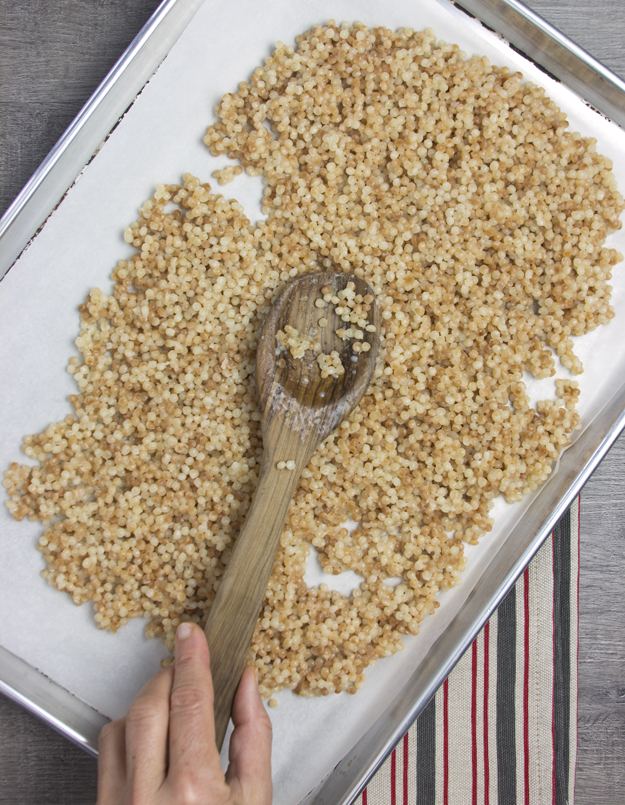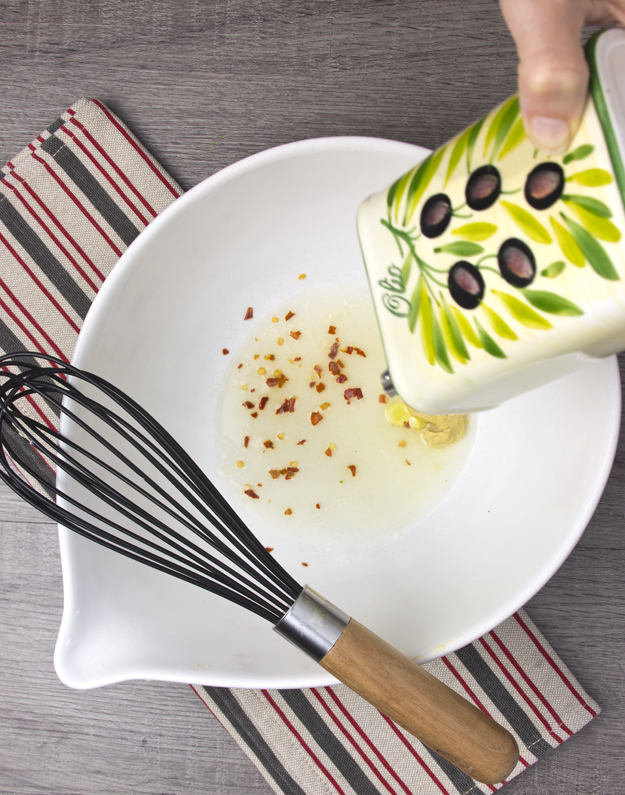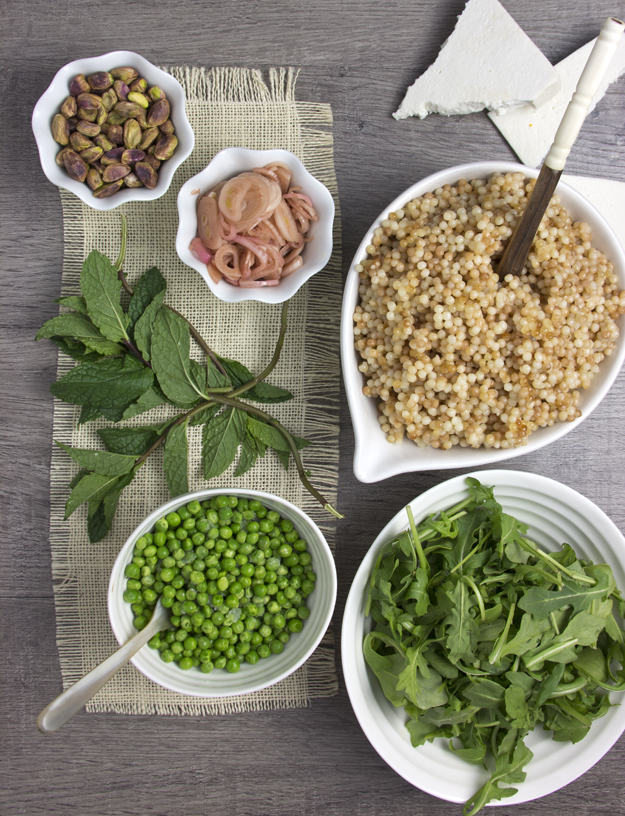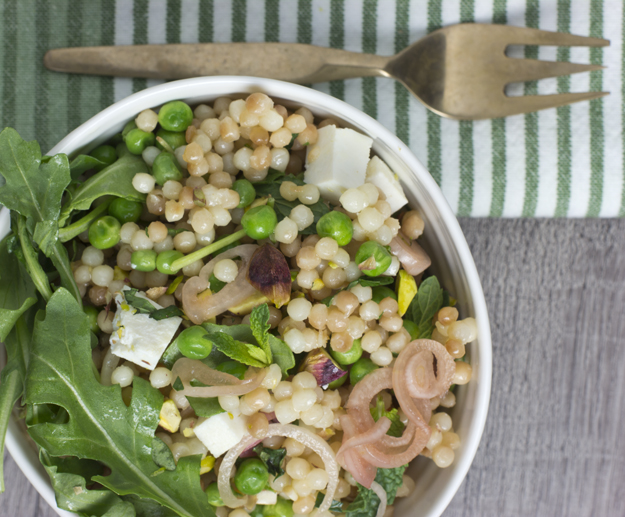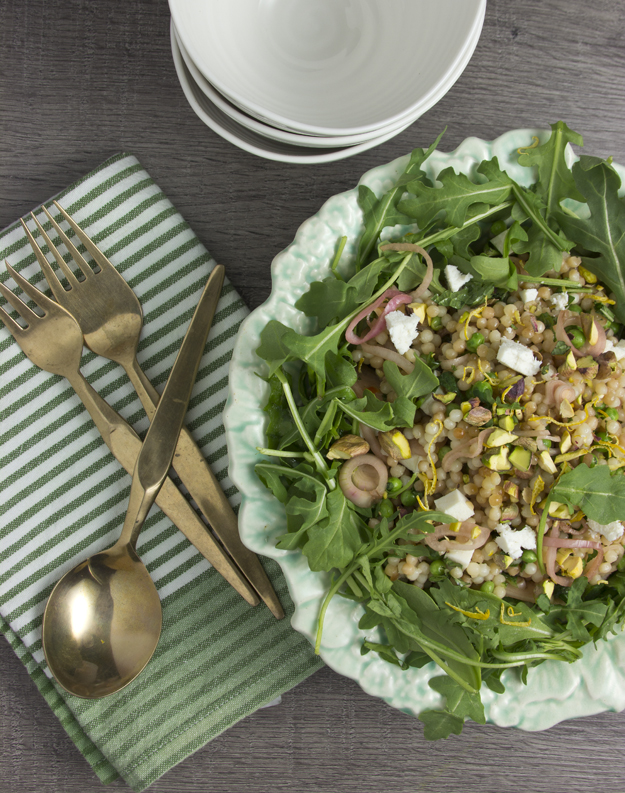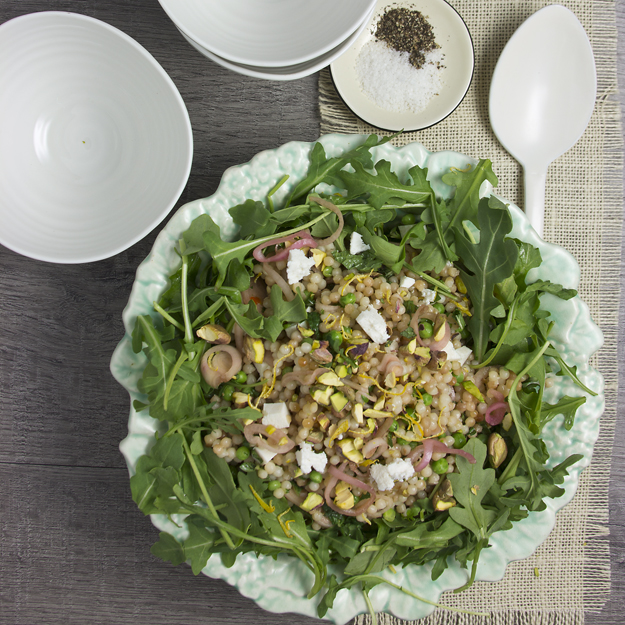
Traditional couscous is actually tiny ground pasta made from semolina flour. It is made by rubbing semolina between wet hands until teeny-tiny balls are formed. The couscous is then dried and steamed. Israeli couscous is also made from semolina flour, but the similarities end there. Israeli couscous is made by mixing semolina flour with water, into a dough. The dough is then machine extruded through a round mould, about 1 millimetre in size. These tiny pearls are then toasted dry, which adds a nutty flavour.
Traditional couscous has been around, some believe, since the 9th century, but Israeli couscous is just a baby. It only came into existence in the 1950’s. Following the War of Independence in 1948, many immigrants arrived in the newly formed country from all over the Middle East. Most of them relied on rice as a staple in their cuisine, but there were rice shortages. Israel’s first Prime Minister, David Ben-Gurion, asked the Osem food company to develop something that they could substitute for their beloved rice. They created “Ptitim“. It was nicknamed Ben Gurion rice, since it was originally extruded in the shape of rice grains. They later introduced a round version which they called Israeli couscous.
This delicious salad is my adaptation of a Cook’s Illustrated recipe. I have only made a slight change. I substituted ricotta salata for the feta cheese they suggested. I prefer the drier texture and less salty taste of ricotta salata. Many Italian grocers carry it. Feel free to use feta if you like, or even some crumbled goat cheese, if that’s your thing.
Begin with pickling the shallots. Nothing too complicated here. You will need red wine vinegar, sugar, a pinch of salt and some thinly sliced shallots. 